Eating and drinking in Poland
#Polish food #importance of food #developments over the last 20 years #shopping #unprocessed food, processed and finished products #game and hunting #cheese #fish #pickling and preserving #Polish cuisine #drinks #traditions #party food #Christmas and Easter #restaurants
Polish food – an enormous change
When talking about Polish food traditions, it’s important to realise that food has been a valued commodity that was not in abundance. The time during and immediately after World War II was characterised by hunger, and this is still reflected in mental attitudes towards food, at least in the ‘adult’ generation, who have an instilled respect for food. After the war came communism, and although there was no real hunger problem in the Polish People’s Republic, the food supply was simple. Many foods were rationed for periods and more exotic items (like oranges) were only available in stores before Christmas.
Until a few years ago, food was still something you ate with consideration
The transition to a free market economy did not mean that people suddenly had plenty of food. Until 2005, 35-40% of household income was spent on food and non-alcoholic drinks, with potatoes, onions, bread and sausages dominating the shopping basket. Today, the figure has dropped below 15% and shopping habits are adapting to the situation in Western Europe. This means that most families are small, many live alone and a large part of food consumption consists of ready made meals or is slapped together with a variety of semi-finished products. Many young people are alienated by the idea of cooking for themselves and spend a huge portion of their earnings on fast food, ready meals and snacks. 56% of adults are overweight, which puts Poland in the middle of the European statistics. My own subjective observations are that the number of fat people has increased extremely in the last 10-15 years.
Sharing food – a sign of friendship
Food and drink play a significant role when meeting each other. This can be at large gatherings with friends and family, but also when you drop in on an acquaintance. In virtually all social groups and situations, you’ll find that offering food is seen as a sign of openness and appreciation. When friends and family visit each other, it’s normal to lug around various food products. These are not necessarily more exquisite items, and a kilo of sugar, half a pound of coffee and two kilos of tomatoes are usually handed over with a remark, that the giver has too much of these products at home. Especially during the summer period, there is a huge exchange of allotment products. More exquisite – but usually not expensive – treats are often given as an expression of appreciation; homemade cakes or bread and pierogi (a kind of ravioli with mashed potato and cottage cheese filling) top the list, but chocolate, homemade fat or sausages from your favourite butcher are also useful for expressing a friendly attitude.
Half a litre of vodka used to be a hit, but the custom is on the decline as drinking culture changes. A half or full litre of expensive vodka as a thank you for a favour is still in use, though.
Half a litre – the highest appreciation
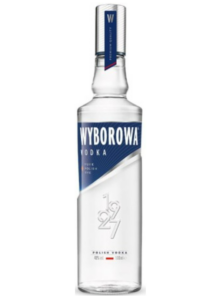
The guest needs to be persuaded and you can’t just start eating what’s in front of you
It is not possible to enter a private home in Poland without being offered food. On a more everyday level, a portion of soup and/or cake will be the absolute minimum, but for new or more significant acquaintances, the catering can be lavish. It is mandatory that the guest says no thanks in the first instance (e.g. “I’ve just eaten”) and the host then encourages you to at least try. This spectacle should be repeated a few times, but always ends with the guest eating until their stomachs burst and they must then be praising the food loudly. It must be emphasised: you can’t expect the guest to eat without being persuaded, and it would be considered a serious offence to insist that you are not hungry.
Many people living alone create new traditions
Sharing food with your guests is again a way of appreciating the value of food and a tradition of sharing what you have, especially if you don’t have much of it. Of course, not all Poles live according to the scheduled habits I describe here. People are individuals, and your social circle can lead you to live by different norms. Food as gifts is undoubtedly more common in smaller towns than in big cities, and traditions are also more zealously maintained among the older generation. You can easily find many young people in Warsaw who don’t identify at all with what I’m writing about persuading guests and giving food as a gift. And of course, it’s on the decline with the urban hermit, who often won’t have anything in the fridge worth sharing. But of course, you can always call for a couple of pizzas.
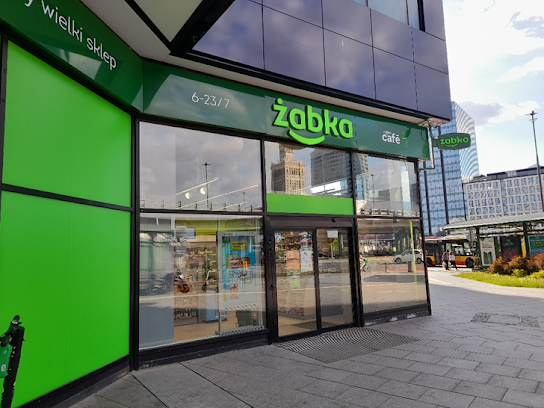
Developments in the last two decades
Until a few years ago, Poles ate in quite a traditional manner. Although Coca-Cola arrived in Poland in 1972, it was an expensive and exclusive product and it wasn’t until 1992 that the first McDonald’s arrived in Warsaw. From the 1980s, a type of pizza started to be sold in Poland, and from 1989 the pizza wave took off, which was a kind of round flatbread with cheap cheese and ketchup. Low incomes were of course a major reason why food concentrated on local staples, but lack of inspiration was just as important. Since the first McDonald’s in 1992, the fast food industry has expanded rapidly in Poland, but at the same time people have started travelling, both on holiday and to work abroad. New ideas of lighter dishes with less flour and fat have been imported, which has had a big impact on Polish cuisine in recent years. The influence of charter travel is evident in the supermarket chains selling lots of Spanish, Portuguese and Greek products, and Mediterranean cuisine with olive oil and fresh vegetables has become popular. Sausages, bread and potatoes are no longer considered staple foods by the younger generation, but rather flavours in a wide range of taste experiences.
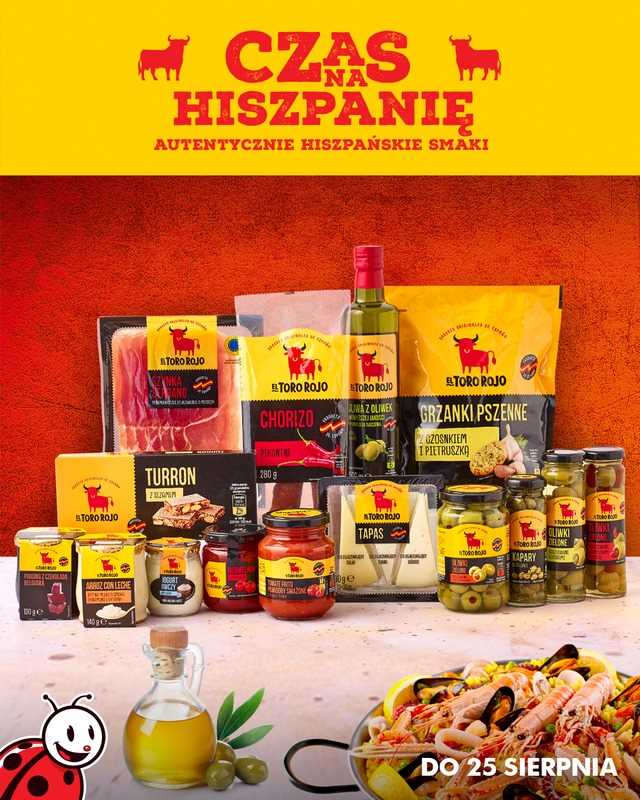
Shopping habits have adapted to the rest of Western Europe
If you take a walk through the shopping centre and look at what people are putting in their shopping baskets, the difference is not that big compared to the rest of Northwest Europe. It’s the same semi-finished products from the same large corporations. Of course, there is a large group of people who shop at the market instead of the supermarket, where there are more local products.
Shopping for food
Local kiosks, greengrocers and small shops have more or less been wiped out in the last 10 years, and the place for quick shopping has been taken over by Żabka (the Little Frog), Poland’s answer to Seven Eleven. Located throughout medium and large cities, they also offer hot dogs, microwavable ready meals and a wide range of alcohol. They have also taken a large part of the revenue from the “Monopolowy”-shops that sell alcohol and often stay open late. In rural areas, the distribution of long-life products is handled by ‘delikatesy’-shops with a more traditional assortment.
Markets – still popular in Poland and the local veggies are fantastic
Another traditional and popular shopping destination is the local markets, which usually have a fairly varied selection of food, especially vegetables. You’ll often find markets close to major shopping centres, where they complement each other. The selection is more streamlined in shopping centres and the Dutch tomatoes are as pretty as if they were produced on an assembly line, but personally, I prefer the ugly and non-uniform vegetables, which have so much more flavour. Sometimes I have to force myself, but I consistently buy the ugliest vegetables and it rarely fails. In city centres, markets are often very exclusive and have often lost their character as distribution centres for “the people”.
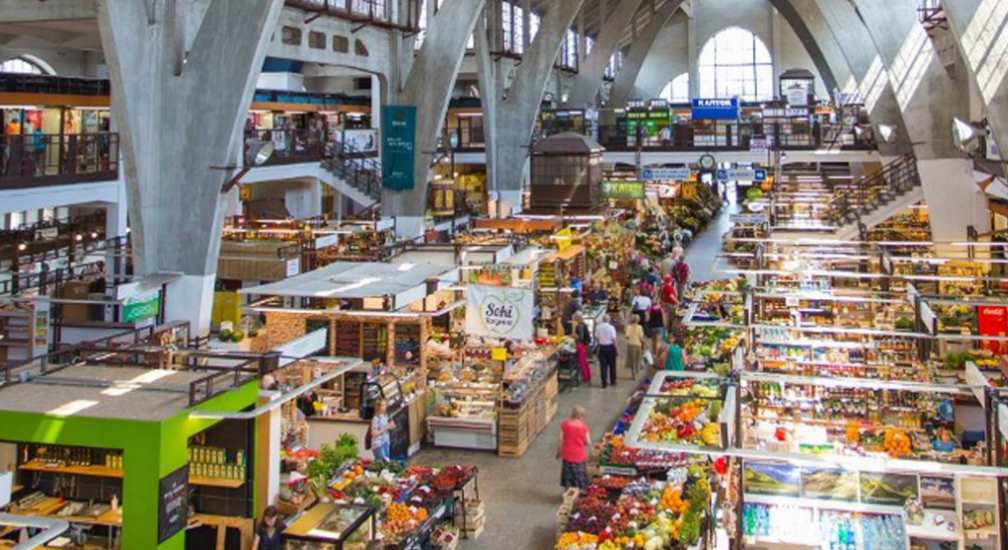
Shopping centres – still here, but not as popular as they used to be
For many years, huge shopping centres run by Carrefour, Leclerc, Tesco and Auchan have been a hit, especially on weekends when the whole family is having a family day. Shopping centres still exist, but they are in decline. Their great strength used to be that they had a huge range of products, but this is now becoming a financial burden with product groups that are not selling fast enough and Tesco has completely withdrawn from the Polish market.
Supermarkets – local shopping in the global chain
The vast majority of Poles today buy their groceries in relatively large supermarkets, the largest of which are the international chains Biedronka (Ladybird) and Lidl, but smaller chains such as Lithuanian Stokrotka (Daisies) and Polish Dino, German Aldi and Danish Netto also have their share of the consumer market. There are also local co-operative stores operating under the name Społem (community) and Supersam. Location is probably the most important factor when people choose where they do their daily shopping, but each of these supermarket chains has its own profile and appeals to a specific customer group.
Allotment gardens – home grown is just better
Many people have an allotment garden or a piece of land adjacent to their house. The economic importance of home-grown produce may not be great anymore, but most people grow fruit and vegetables with love and enjoy the fresh flavour. Pensioners may supplement a modest state pension by selling their own vegetables.
Mushroom hunting – the national sport during the weekend
Furthermore, mushroom hunting in the big forests is a popular leisure activity. Many are experts in finding and identifying edible mushrooms, and this is another opportunity to fulfil the need for a shared experience for the whole family.
Specialty shops – they are there, but you have to look for them
The number of speciality stores is declining and under pressure. You can still find bakers and meat shops (as butchers are called), but they are struggling to survive. Urban niche stores serve the elite with cheese, fish, Mediterranean products and other speciality goods, but the vast majority of Poles never set foot in one. A few bakeries in larger cities specialise in luxury bread and have transformed into a combination of cafe and bread shop.
Buy it on the Internet – directly to your local parcel machine
A growing share of groceries is also sold online, much of it through the Allegro trading platform. It sells toothpaste, coffee, cat food, sweets and other long-lasting products at competitive prices which is delivered quickly to parcel machines.
Unprocessed, processed or ready-made products
As mentioned above, many excellent vegetables are grown on smaller plots of land. These are traditional vegetables such as tomatoes, small cucumbers, carrots, beans, potatoes, beetroot and cabbage, which have traditionally formed the basis of a Polish diet. As mentioned, mushrooms also have great traditions, and during the mushroom season, chanterelles and boletus are available in abundance and at very reasonable prices. Vegetables are usually sold fresh, but the traditional, old-fashioned frozen food company Hortex packs the vegetables in freezer bags so that they are available all year round.
Rye and wheat – bread is still king
Of course, Poland also produces grain. Until 1989, one kind of bread was sold everywhere; a solid wheat bread, with a significant addition of rye. It is still sold and is simply called chleb (bread). You could also buy buns made from pure wheat flour and in some places rye bread. In recent years, there has been a drastic change in the supply of bread, partly due to the large selection and industrial production methods in large shopping centres (semi-finished products that are baked in-store). Furthermore, industrial bread is gaining ground as an alternative to freshly baked bread. Different types of wholemeal buns are also gaining ground and rye bread, previously considered a poor man’s food, is gaining honour and dignity as an exclusive health product. In the city centres, you’ll also find relatively expensive French and Italian-inspired breads and cakes. Large amounts of semolina are also produced and prepared in different ways.
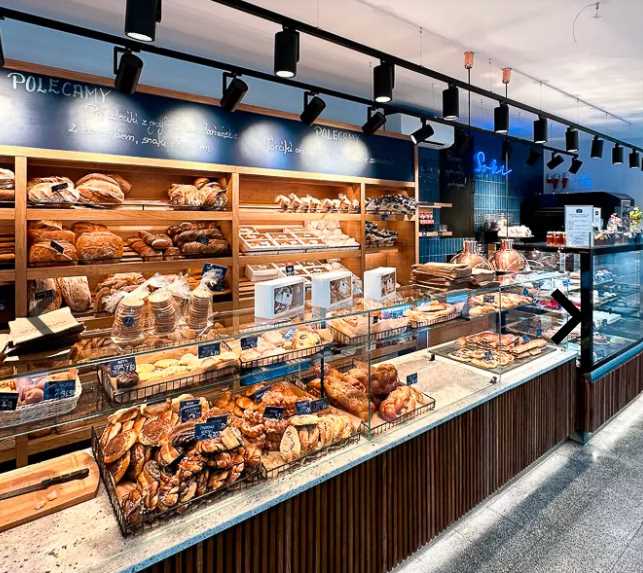
Pork – the epitome of Polishness
Pork is the epitome of Polishness for most Poles and they are proud of their pork, which is juicy and fatty. In addition to pork chops and roasts, uncut pieces are used for sausages, which in Poland actually contain a fair share of meat. A number of Western European companies currently produce pigs in Poland, some with integrated feed supplies and slaughterhouses.
Poultry – everywhere and cheap
Chicken farming used to be popular in the countryside, but the small chicken farms have almost all succumbed. Almost all chickens live on large chicken farms in cages manufactured according to EU standards. Here their job is to lay eggs or to eat until they are ready for slaughter. The flavour is just as exciting as any frozen supermarket chicken, but in recent years there have been tentative attempts to produce free-range and gourmet chickens, appealing to the growing group of well-off citizens who are interested in animal welfare. Turkeys have become popular as a low-fat alternative and can be found in all Polish butcher shops and meat counters.
Beef – until recently old milk cows, but now it has become exclusive
Until joining the EU, beef was primarily considered a waste product from dairy cows, and beef was very cheap compared to the price of pork. However, upon joining the EU, the price structure was aligned with the European level and the quality of beef has improved significantly in recent years; supermarkets have started offering quality well-hung steaks and the availability of veal has increased dramatically. The older generation is still getting used to this change, but young people now consider a well-hung beef tenderloin to be a luxury food.
Game and hunting – Poland is after all the country of hunting
Poland boasts vast wild forests with plenty of wildlife. Even in big cities, you’ll often encounter a lonely fox or a family of wild boars who don’t quite understand the meaning of traffic rules and traffic lights.
Hunting is popular in Poland and organised hunting trips from other countries are also popular. All in all, this results in a significant production of wild boar, deer and wild poultry sold through restaurants and speciality shops.
Cheese in Poland
Poland is not known for delicious cheeses, to say the least. The vast majority of yellow cheese taste like nothing. The lack of flavour is partly due to consumer demand and partly because there has been no tradition of adding bacterial cultures to the mass during cheese production in Poland. On the other hand, there is a large amount of imported cheese.
Imported cheese
Poland is not known for delicious cheeses, to say the least. The vast majority of yellow cheese taste like nothing. The lack of flavour is partly due to consumer demand and partly because there has been no tradition of adding bacterial cultures to the mass during cheese production in Poland. On the other hand, there is a large amount of imported cheese.
Imported cheeses include cheeses from all over Europe, mainly Holland and Spain. The most powerful probably Oud Amsterdam, but this is definitely a niche product
New trends
The situation is slowly changing, with many supermarkets selling Polish copies of internationally recognised cheeses. Recently we see a number of locally produced cheeses with more flavour.
Bursztyn, Rubin and Szafir
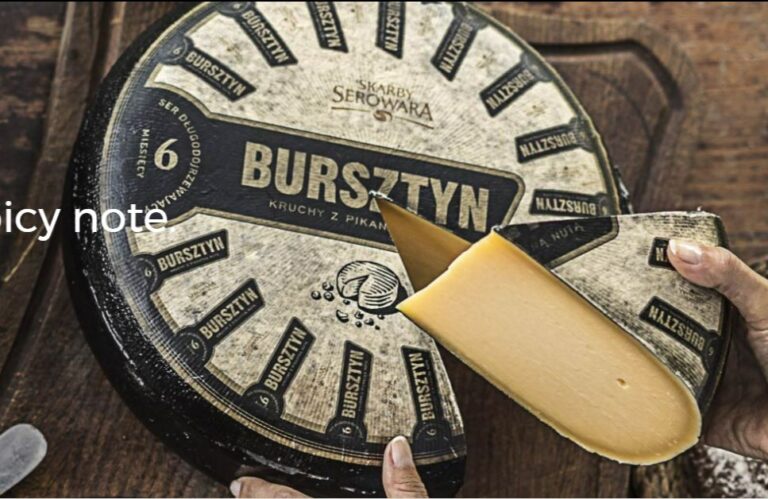
“Skarby Serowara” is a Polish company that started 22 years ago and today produces 3 excellent cheeses – Bursztyn, Rubin and Szafir: (Amber, Ruby and Sapphire) – all of which are tasty yellow cheeses with bacterial additions. Bursztyn is the cheese with the strongest flavour, but the standard 6-month aged version will not satisfy a fan of strong cheese. On the other hand, they have started to produce cheeses with a maturation period of 9 months to 2 years, which are perhaps rather Dutch in the taste, but fulfil the requirement for cheese to deliver a strong flavour experience. The 9-month-old cheese can be cut without problems, while the 2-year-old Bursztyn may be difficult to handle with a cheese cutter.
Liliput – a cute little thing
Liliput ses på supermarkedshylderne overalt i Polen. Det er en lille, rund ost, som produceres i området omkring Poznan. Det er en gul ost produceret af komælk, med en blødhed og konsistens, der minder en del om danske oste, men smagen er mild. Den er nem at skære med en osteskærer.
Oscypek – smoked cheese
Oscypek is a smoked sheep cheese that was originally produced in the mountains south of Krakow. It is usually surrounded by a white or brownish patterned crust and is commonly sold at markets and from street vendors. The cheese is traditionally produced in private households. The flavour is intense (smoky) and the texture is elastic. Usually cut into thick slices.
5 minute film with subtitles in Polish and English. How to make oscypek:
Rokpol – inspired by French Roquefort
Rokpol is inspired by the French Roquefort, but the Polish version is often produced with cow’s milk. It is produced by adding fungal cultures. Produced in Poland since 1954, it has a relatively mild and slightly salty flavour for a blue cheese, but it’s an excellent cheese at a reasonable price. I’ve often used it myself with cream and bouillon to make a thick cheese sauce that I’ve used for spaghetti. That sauce has driven at least one girl crazy with love.
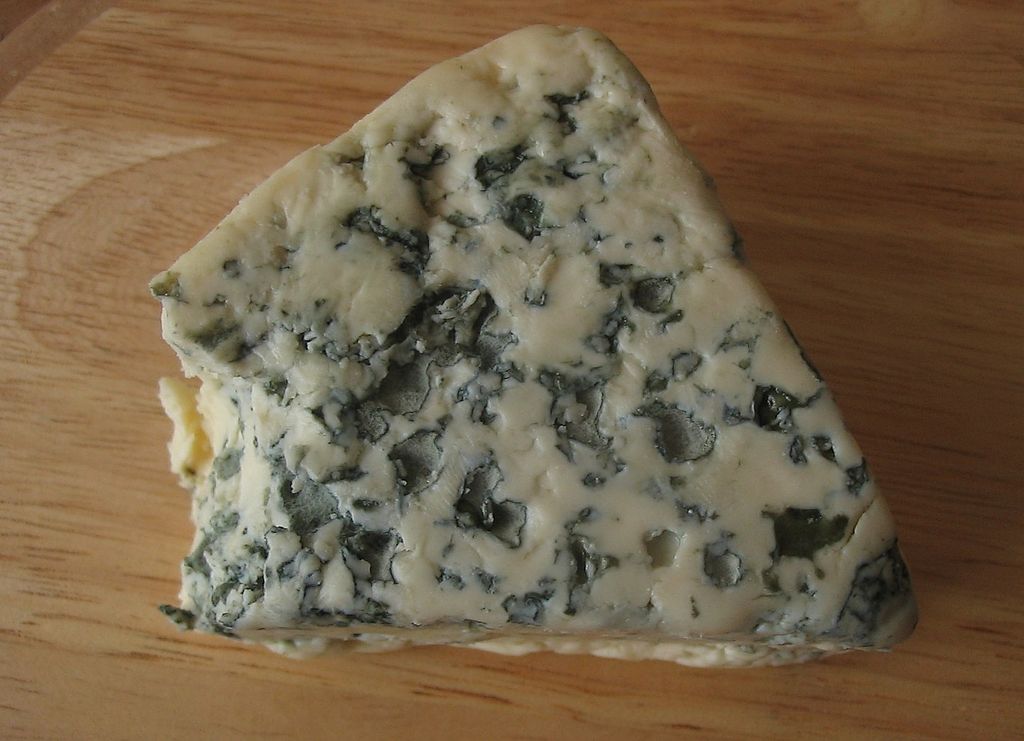
White cheese
Fresh cheese, cottage cheese, twaróg or white cheese are soft dairy products. They are often eaten for breakfast, with salads or added to cakes.
Fish – remember carp for christmas
Until the rise of shopping centres over the last 15-20 years, fish was only something you could buy frozen, unless you happened to be on the coast. Today, efficient distribution ensures that in all major centres you can buy a small selection of freshly caught Polish fish as well as cod, Norwegian salmon and more exotic fish products from around the world, so fresh fish is relatively new to older Poles – with the exception of carp, which is farmed in ponds but eaten mainly at Christmas. Sprat, cod, herring and flounder are the main species caught from the Baltic, most of which is sold at fish markets along the coast. However, some herring is salted, and has a distinct salted taste.
Pickling and preserving – a great tradition
The vast amounts of food brought home from the forest, garden and family must of course be preserved, and most Polish households have a space in the basement or a dark chamber reserved for jars. Mushrooms, cabbage and cucumbers are among the most popular, but apples, berries and other surplus produce also find a place on the shelf. Mushrooms in particular are also dried, which is an excellent preservation method.
Polish cuisine – influx from other countries have changed the way, Poles eat
Polish cuisine has drawn inspiration from many different neighbouring countries, depending on where trade relations and wars took them and which chefs the Queen imported from Italy or other exotic countries. Immigration has also had a significant influence (Jewish) as well as neighbouring countries, especially during the period when Poland was divided between Prussia, Austria and Russia.
The heavy Polish cuisine has become lighter
Traditional food in Poland can seem a little heavy to a modern health conscious visitor. There are a lot of pasty cereals and fat percentages are often high. Furthermore, Polish food leans more towards the sour side, and many visitors could use a teaspoon of sugar in their food. However, Poles have travelled a lot in recent years and the focus has shifted towards more healthy food. As a result, the traditional cuisine of many housewives and chefs has become lighter and the direction is clearly towards a Europeanisation of food culture.
Below a selection of popular Polish products and dishes:
Placki ziemniaczane (potato pancakes) – Grated potatoes are mixed with eggs, flour, onion, salt and pepper. Fry in the pan. Eaten with sour cream (creme fraise), goulash or whatever else you fancy, but some prefer them with sugar/jam. Of course, they are also sold ready-made in supermarkets if you’re not in the mood for grating (you can also use a blender). They just need to be heated in a pan. I buy ready-made potato pancakes from time to time and put them in an air fryer for about 15 minutes, which makes a delicious and crispy accompaniment to a main course.
Potato pancakes – here a picture from Lidl
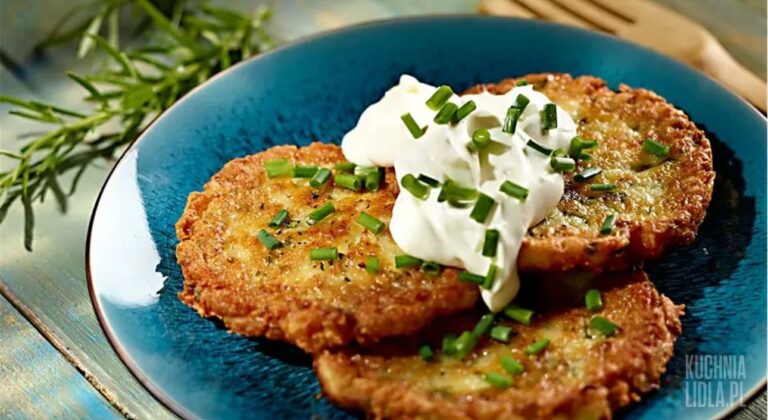
Naleśniki (pancakes) – pancakes are usually thick in Poland. They can be served as a dessert with ice cream, whipped cream, jam, etc. and as a main course with goulash or other hot fillings.
Pierogi (pierogi/Polish ravioli) – similar in shape to ravioli. Stuffed dough that is boiled in water; can be pan-fried afterwards. The stuffing can be a kind of mashed potato with cream cheese (pierogi ruskie), but it can also be made from mushrooms, sauerkraut or meat and a variety of other fillings – the only limit is your creativity.
Pierogi are extremely popular in Poland. At Christmas and other special events they are made from scratch, the rest of the year most people buy them ready-made – either chilled and warmed in hot water or the oven, or frozen.
In the film below, we see an English-speaking Polish chef preparing pierogi:
Kotlet mielony (meatball) – the Polish variant of meatballs as seen in most European countries; they may vary locally.
Golonka (pork shank) – This is usually a feast – cooked and eaten with mustard or horseradish. The upper part of the pig’s front or hind leg is used. Big, strong men are especially fond of golonka, while fans of modern, low-calorie cuisine often look pained when they see a portion of golonka.
Golonka – here a picture from restaurant U Szwejka in Warsaw city centre. Here, of course, it is presented with beer.
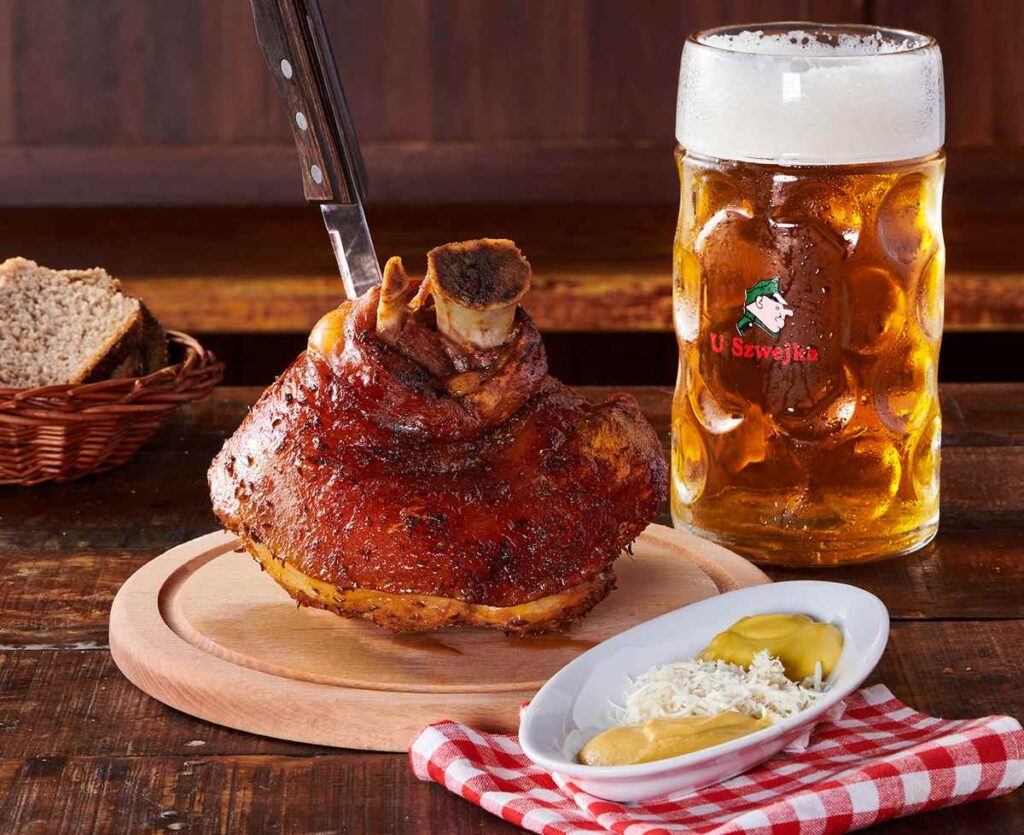
Gołąbki (cabbage rolls) – a stuffing of minced meat and rice or semolina and vegetables rolled in white cabbage leaves and fried in ovenware. There are a number of different recipes for cabbage dumplings, and the dish is widely known in Eastern Europe and other parts of the world.
Kotlet Schabowy (porkchop ) – Often beaten till it is flat and breaded, the epitome of Polishness. Preferably served with potatoes and cabbage as a side dish. It should preferably be thin, but it should look laaaarge on the plate. It’s similar to a Wiener schnitzel, but the schnitzel is traditionally made from veal, while the schabowy is a pig.
Image: Vikipedia Autorstwa Dmitry Dzema – Praca własna, CC BY-SA 4.0, https://commons.wikimedia.org/w/index.php?curid=41431792
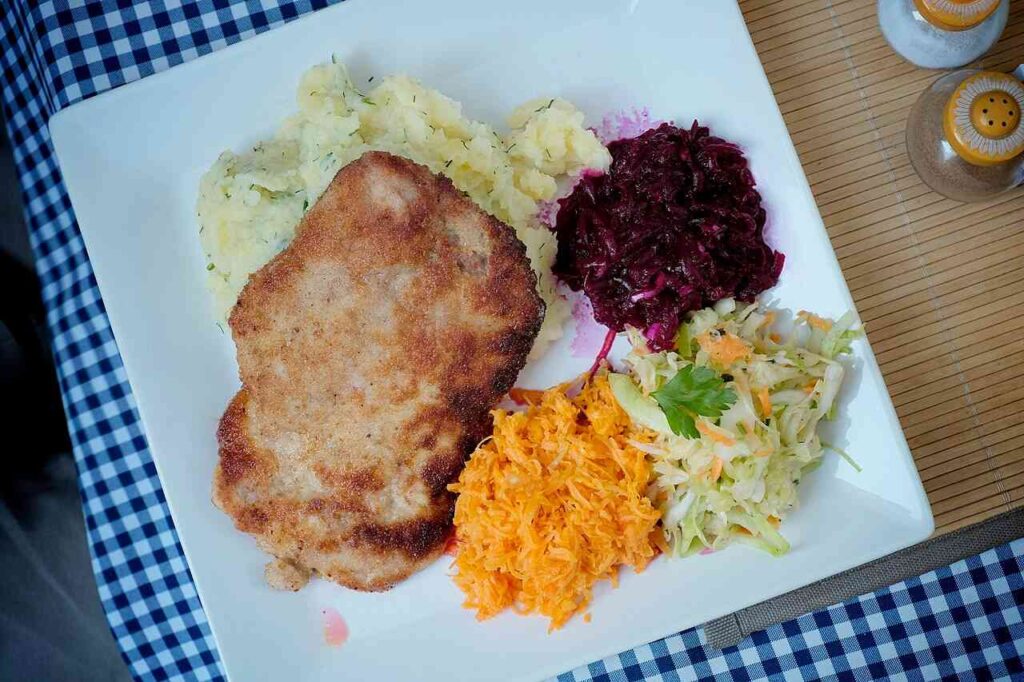
Bigos (stewed sauerkraut with leftover meat) – I usually call it Polish hash. Stewed sauerkraut is mixed with fresh cabbage, onions, sausages and whatever leftover, cold cuts and mushrooms you have. Cook several times. In some families a precise recipe is followed and the process is complicated, in others it’s simply leftovers.
Kluski (dumplings/noodles). Available in different shapes and sizes and with different extras depending on the region. They are served as a snack, a side dish or dessert. They may resemble pasta, but are usually heavier in texture. Examples of kluski include Pyzy (stuffed noodles) – dough made from flour and possibly potato flour in a meatball-like shape, often stuffed with mushrooms, stuffing or other ingredients. Slightly different cooking methods depending on region. Can also be made with yeast dough.
Zapiekanka – traditional Polish fast food from before the arrival of pizza and burger chains. Zapiekanka consists of a sliced flute covered with melted cheese, mushrooms and ketchup, and possibly other delicacies. There are still stalls selling zapiekanka, and Poles living abroad can get very excited about a zapiekanka when visiting Poland.
Image: MichalPL, https://commons.wikimedia.org/wiki/File:Polish_zapiekanka,_June_2021.jpg?uselang=pl
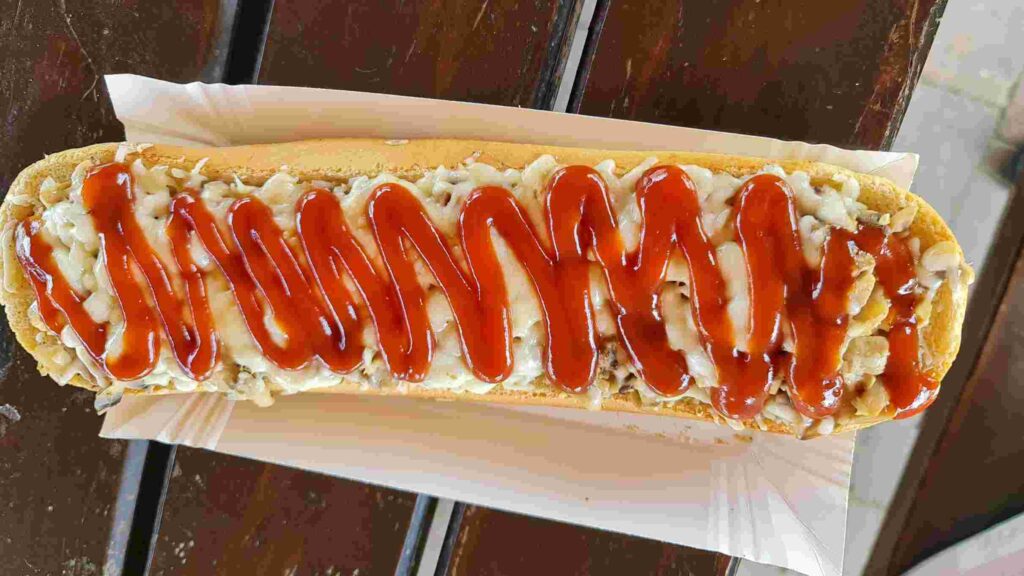
Extras to meat or beer:
Ziemniaki (potato) – served boiled, boiled and fried, as well as in many other variations. Usually peeled before boiling, rarely afterwards. Different types of potatoes are produced in Poland, but supermarkets and consumers rarely notice them. Potatoes are potatoes.
Ogórki kiszone (pickles) It’s the test of whether you’re a real Pole. Real Poles can’t live without pickles.
Kapusta kiszona (sauerkraut) Test number 2. Real Poles can’t live without sauerkraut either, although in recent years it has taken on a milder flavour.
Kasza (semolina) is produced in different forms. It is eaten cooked, as porridge, and can also be prepared as pancakes or cutlets.
Chleb ze smalcem (fat bread) You’re bound to come across it if you’re at a Polish town festival or similar, where there are small stalls selling local products.
Fasola szparagowa (asparagus beans) Grown in any well-stocked allotment garden.
Marchewki (carrots) – usually eaten fully cooked, but also available as raw vegetables.
Soups
Barszcz czerwony z uszkami (beetroot soup with noodles) Mandatory on Christmas Eve in many regions. Below a video about how to make barszcz.
Zupa ogórkowa (cucumber soup)
Zupe pomidorowa (tomato soup)
Rosół (bullion/ chicken soup)
Żurek (Polish sour soup)
Flaki (tripe soup) – soup cooked on cow stomachs.
Kapuśniak (cabbage soup)
Krupnik (semolina soup)
Zupa grzybowa (mushroom soup)
Cakes and the like:
Faworki (kind of cruller)
Pączki – a glazed yeast dough with “inbuilt” cream, jam or other goodies. Tłusty czwartek (Fat Thursday) is the last Thursday before Lent (usually in February) and it is mandatory to eat as many paczki as possible, but they are happily eaten all year round.
Babki (Easter cookies/sand cakes) – Basically sand cakes, but especially for the holidays they can be spiced up with different treats such as nuts, candied fruits and the like.
Makowiec (birch cake/birch roulade) – a roulade stuffed with a sweet birch cream.
Sernik (cheesecake) – various types of pastries with cream prepared from white cheese.
Piernik (Pryanik) – cookie-like baked cakes with honey.
Beverages
Wiśniowka – a reddish vodka type with cherry flavour. Usually lower alcohol content than clear vodka but stronger than typical cherry liqueur. Traditionally prepared at home, it can also be bought in shops at reasonable prices.
Kwas chlebowy (Kvass) – European medieval drink, now mainly popular in Russia and Ukraine, but can be bought in Poland. Made from fermented bread. Labelled as non-alcoholic, but contains around 1% alcohol. Lovely, slightly bitter flavour and refreshing on hot summer days. It is available in bottles in supermarkets but is also sold from barrels in trolleys at outdoor events.
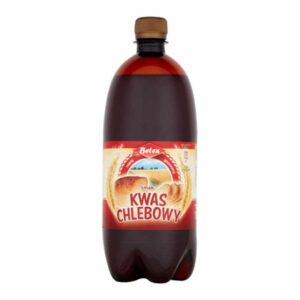
Polish wine – Poland has had experimental wine production in the Zielona Góra area for many years, but in recent years interest has increased in different parts of the country. Most of the producers will today be found around Craków However, production is still limited and Polish wine is considered a rarity. However, the warm weather of recent years has improved production conditions and many are experimenting with micro-production of a few thousand bottles. A bottle is available at the liquor store for 50-70 zlotys, and it’s not that bad to try it out.
Piwo (beer) – is very popular in Poland. Lager or pilsner type beer is produced by a limited number of large breweries. The most popular brands are Żywiec, Zatecky and Tyskie. Most major cities have at least one pub that brews its own beer, and additionally special beers and imported beers from around the world have become popular among the young and beautiful, while old beer types are being dusted off and produced anew. All big cities have pubs with speciality beers, and there should be at least 30-40 different types of beer if you want to belong to the beer elite.
Below PiwPaw – a specialized beer pub in the centre of Warsaw

Nevertheless, the vast majority of beer is of the lager type and tastes similar to Carlsberg and Heineken. There’s also a big market for fruit-flavoured beers, like English shandy.
Sales of non-alcoholic beers have skyrocketed in recent years due to improved production methods, and they now fill a significant portion of supermarket shelves. However, apart from fruit-flavoured beers, there is virtually no beer to cover the market for beer with a low alcohol content and the vast majority of beers have an alcohol content of at least 4.5%.
Wódka (vodka) – traditional Polish alcohol. Although consumption is declining in favour of wine and beer, vodka is still widely consumed in Poland and well-stocked supermarkets often offer over a hundred different brands. Imported vodka used to be considered the most exclusive, but Polish products are now often exported and their prestige has increased to the point where they are often as expensive as international brands. Half a litre of vodka is always a good gift idea as a thank you for a small favour.
Some of the best known Polish vodka brands are Żubrówka, Belvedere, Chopin and Wyborowa, which are also exported. Vodka is primarily produced from potatoes, rye and wheat, and sometimes flavours are added to the vodka. If you want to learn more about the history and production methods of vodka, I recommend the Vodka Museum in Warsaw, where you can also get a small tasting.
Aged vodka – like old cognac or whisky
If you’re travelling to Poland, it might be worth trying one of the traditional regional vodkas – ‘Starka’, a rye vodka aged in oak barrels, similar to cognac or whisky. It’s been around for centuries, and traditionally a barrel was made at the birth of a son and later opened at his wedding.
Starka has been manufactured by Szczecińska Fabryka Wódek “STARKA” in Szczecin, which is currently in bankruptcy proceedings but may be resurrected with new investors. The products are sold throughout Poland, although it is an exclusive product. Polish Starka is currently available with an ageing period of 3, 6, 9, 18, 21, 25, 30 or 35 years, and if you want to feel like you’re enjoying an exclusive product, you’ll probably need a minimum of 9 years – but then it’s also comparable to cognac or well-aged whisky.
Miód (mead) – a traditional medieval drink produced by fermenting a solution of honey and water. Different types are sold in Polish supermarkets.
Traditions – obiad in the middle of the day
The main meal of the day is obiad. It is a hot dish, often meat or sausages accompanied by potatoes. Often you will have a soup before the main course. Obiad is consumed at two o’clock if possible. In cities, working hours tend not to fit this rhythm and some Polish families start eating the main meal in the evening, while during the day people have a lighter meal at their desk.
Breakfast
Breakfast is eaten in between all the other things you do in the morning and usually consists of a yoghurt or a slice of bread. Second breakfast is eaten a few hours later. It’s usually some sandwiches or whatever else you can find in the fridge, and is typically eaten at your desk or during a short break.
In the evening
Kolacja is eaten in the late afternoon/early evening when everyone is home from school and work. It’s a cold meal, consisting of bread, cold cuts and possibly salad and whatever can be prepared quickly. It is often consumed with tea.
Fasting – remember: meat is a no-go on Fridays
Post (fasting) – observed by many more or less devout Poles, fasting is often seen as a physical cleansing process if not treated as a spiritual ditto. Fasting means not eating meat or enjoying alcohol, but it is ok to eat fish. Friday is a fast day all year round, and at least the part about not eating meat is observed by many. Furthermore, there are 40 days of fasting before Easter, which is generally taken less seriously.
Communist Poland tried to distance itself from religion and teased the church by making sure all butcher shops were closed on Mondays. This tradition lasted long after the collapse of communism in 1989, and was only completely wiped out when people started buying meat in shopping centres or supermarkets.
Banqueting and country house cuisine
For larger gatherings, the food should first and foremost be plentiful and will typically consist of traditional Polish dishes – you rarely experiment with the menu at weddings and other large events.
An offshoot of traditional Polish cuisine is manor house cuisine, which stems from the self-sufficiency strategy of the nobility. Salt and spices were bought, but otherwise all raw materials were processed and preserved on the manor. Here, honey is used as a sweetener and they utilise what can be found in the forest, which is why game plays an important role, along with mushrooms and wild berries. Game dishes are still popular in restaurants specialising in Old Polish cuisine, where pheasant, wild geese, wild boar, hare, fallow deer, elk and venison are commonly found.
Christmas and Easter
Of course, the two major Catholic holidays both have their own traditions.
Easter is just as important as Christmas, perhaps a little more religious than December, but an important part of the celebration still revolves around food or lack thereof. Maundy Thursday and Good Friday aren’t official public holidays in Poland, but you still go to church in the evening and have time to prepare the morning meal for Sunday. In addition to eggs, it consists of a plethora of cakes and cold meats, as well as a number of symbolic accessories, including bread, salt and horseradish.
Always an extra plate on Chritsmas Eve
December is the big spending month in Poland, but on Christmas Eve the family gathers around the Christmas table. Traditionally, the table is set with an extra plate, so that you can always receive an unexpected guest, but I’ve never heard of anyone receiving unexpected guests on Christmas Eve. Traditionally, Christmas Eve is meatless, but it’s not a religious requirement, and when I’ve spent Christmas with Poles, I’ve usually got a dispensation to make a roast pork. The menu depends on the region and family traditions, but should consist of 12 courses, although some maintain a tradition of a larger number of courses, which should then be uneven. Carp and herring are on most Polish tables on Christmas Eve. The carp should preferably be fresh and may have spent a few days in the bathtub. However, the bathtub thing is on the decline as animal welfare has moved up the agenda. You’ll also find beetroot soup, mushroom soup and other traditional Polish regional dishes.
Restaurants
The restaurant industry has evolved dramatically over the last 30 years. Restaurants have gone from being a necessity in the form of canteens, public kitchens and hotel restaurants for travellers, but communist Poland distanced itself from restaurants as a pleasure.
Reset in 1989
It also meant that Poland emerged on the other side of the system change in 1989 with very few chefs and people with vision on how to run a restaurant. There was experience to be imported and a generation of restaurant owners and chefs to be trained. It’s been a success, but it’s taken some time.
An increasing number of people are going to the restaurants
The mentality has also changed. Visiting restaurants has gone from being something a little sinful to a legitimate experience. The increasing salaries result in more people being able to go to a restaurant, and at the same time many chefs have returned to Poland after a number of years in great restaurants around the world.
A rapid development
When I wrote a guide about food and restaurants in Poland in 2012, I wrote that you don’t go to Poland with the aim of going to a restaurant. Maybe I was a bit harsh here, because in 2012 good restaurants were starting to appear, but they weren’t as widespread as they are now.
However, the market is very dynamic and many restaurants close after a short time. The advice is to search Google for good restaurants, including Michelin recommendations, but also Tripadvisor and similar sites, where you can show a little healthy scepticism.
Prices are generally much cheaper than in Western Europe, but although the quality is improving, there is still a lack of top-class restaurants; however, there is no doubt that they are on their way.
Please send an email to m@hardenfelt.pl if you would like a English-speaking tour guide to show you the most important places in Warsaw.


